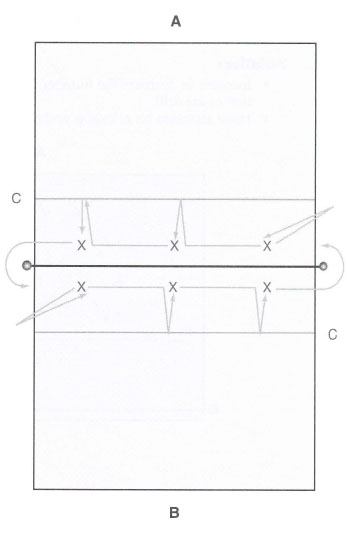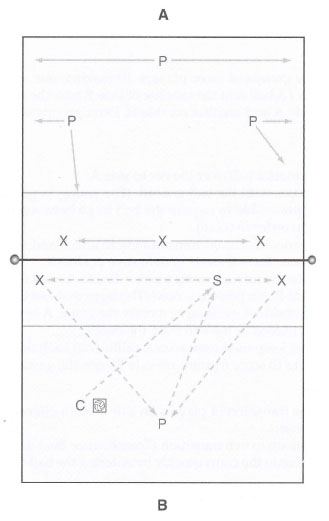|
By: American Volleyball Coaches Association Originally Published in - The Volleyball Drill Book - By Human Kinetics
Transitions in volleyball include the time spent moving from one skill to another and moving from defense to offense and back. A successful volleyball team practices transitions regularly, gaining precision and speed. Every player must know where to go and how to get there.
The team movement on the court should be marked by a focused but relaxed group flow. Transitional flow is a fluid shifting in which players seem to Move as one and each player knows where and how to move in relation to the rest of the team. On a team with good flow, everyone moves at the same time with an efficiency, precision, and smoothness that make it look effortless. Each player must move in the most efficient line possible and with little or no wasted energy. Coaches should spend time teaching individual movement patterns before running team transition drills. If every player knows where to go to cover after an attack and where to move in defensive play, the team's transitions will flow smoothly. A single player moving to an incorrect position or moving too slowly to that position interrupts the flow. Players should move from a medium level, neither as high as for the serve nor as low as for the dig. In this position the knees are slightly bent so that players move with the help of the biggest muscles. Players should be light on their feet rather than loud and heavy. Encourage hitters to land on both feet and then transition to a blocking or low defensive position. If players move in a high position, the transition is less efficient and more awkward because they will have to lower themselves to a defensive position when arriving at their next task. Transition work should be done without the volleyball first and then with it. Walking through transition is a necessary part of learning. Repeat this until players can do it efficiently and proficiently and at game speed. Then add a ball. Practice repetitions of each transition that occurs within the game of volleyball. The drills in this chapter focus on the time and movement between skills in the game. Some are individual in nature, such as working on a hitter transitioning to block after the attack and then transitioning back to the attack. Some drills focus on team transition, such as a team on offense with good hitter coverage and then transitioning to team defense with everyone moving to their base position and back to offense. The following drills teach players to make smooth, efficient, quick transitions. You will also find that transition work improves the running of multiplayer and team drills. Coach, you will not regret making transition work a regular part of each practice. Teams with great championship history excel in transition work. These teams have flow and often win even when they are not as skilled as their opponent. Transition can win matches. Pull Drill This is an outstanding drill for emphasizing proper footwork in a controlled situation. It is also a fantastic conditioning drill. Purpose To perfect the footwork for hitters' transition off the net and approach to attack. Setup
Six hitters set up in the right front, middle front, and left front on both sides at the net in base position as if they were preparing to block. Coaches set up at the sideline near or behind the 10-foot (3 m) line. Run the Drill
Coaching Points
Variation Increase or decrease the number of transitions based on players' fitness levels. Team Transition This is an excellent drill for practicing transitions on one side of the net while practicing setting and passing repetitions on the other. It is also good for encouraging blocker communication and promoting player conditioning. Purpose To read, respond, and transition from defense to offense. Setup Six players set up in base defense on side A. A setter gets into position 6 on side B. One player sets up in position 1 and another in position 9 on side B. A third player sets up in the middle back on side B.
Run the Drill
Coaching Points
Variations Side B players can rotate. For beginners, have only the outsides set and hit down balls over the net.
|









